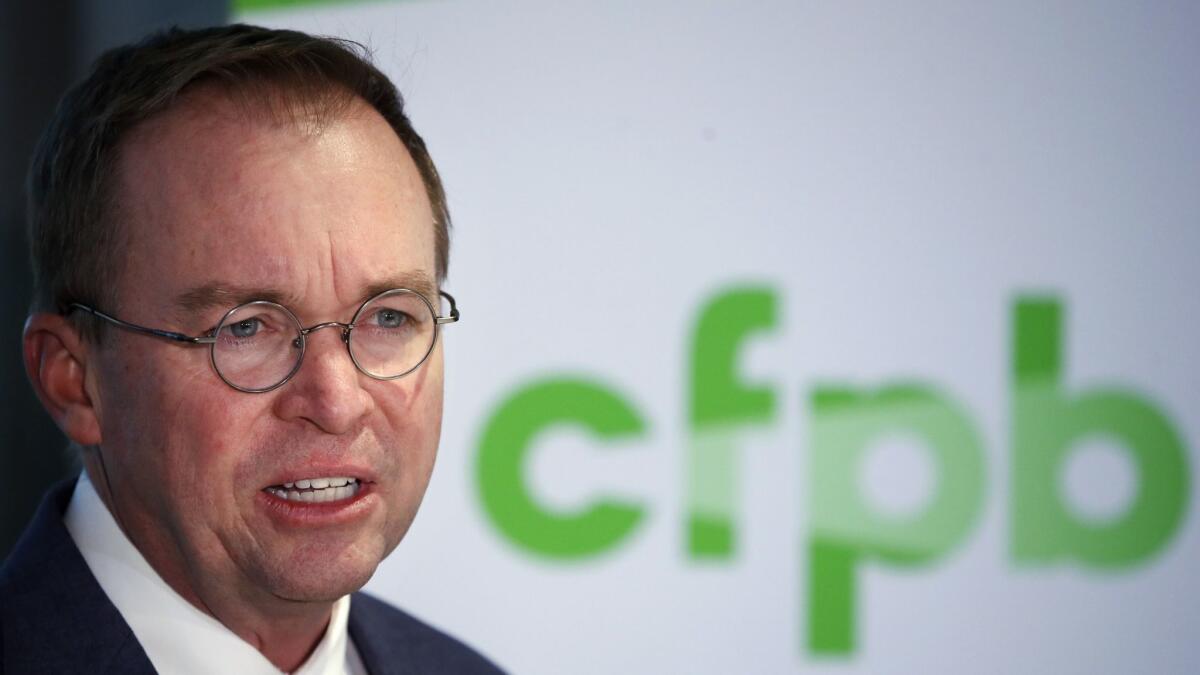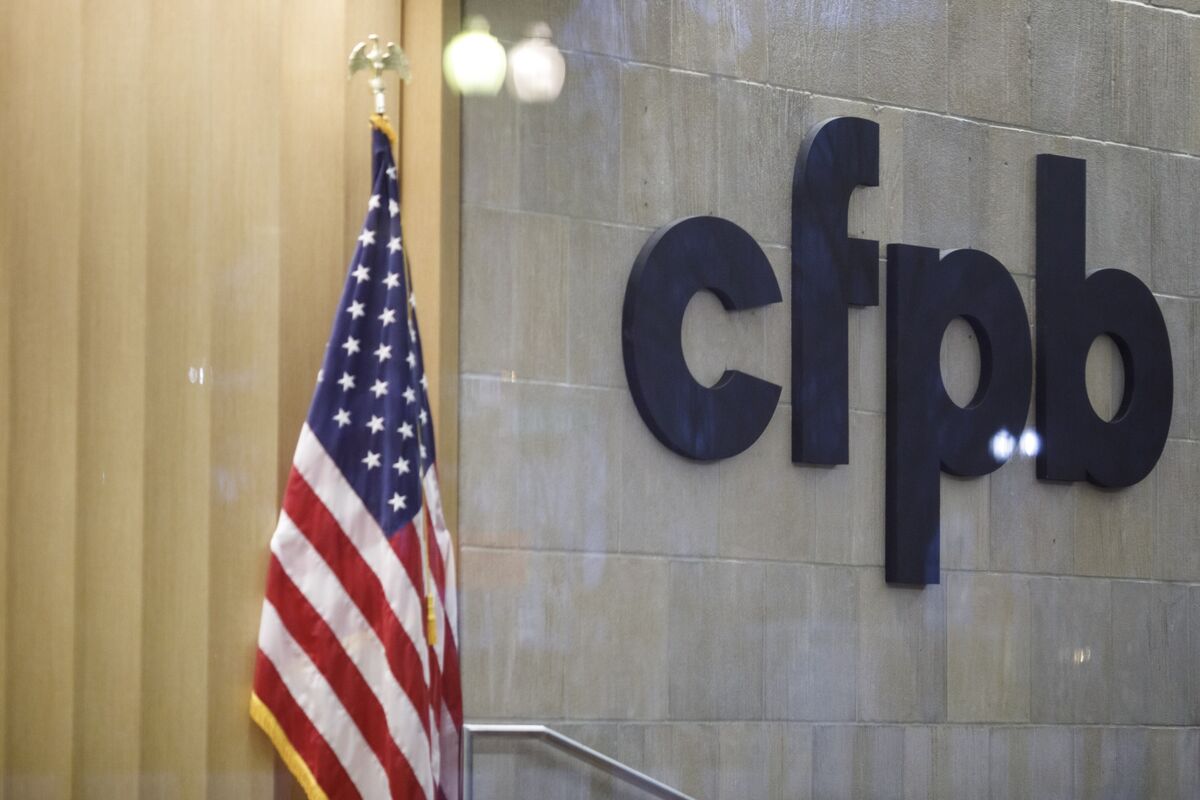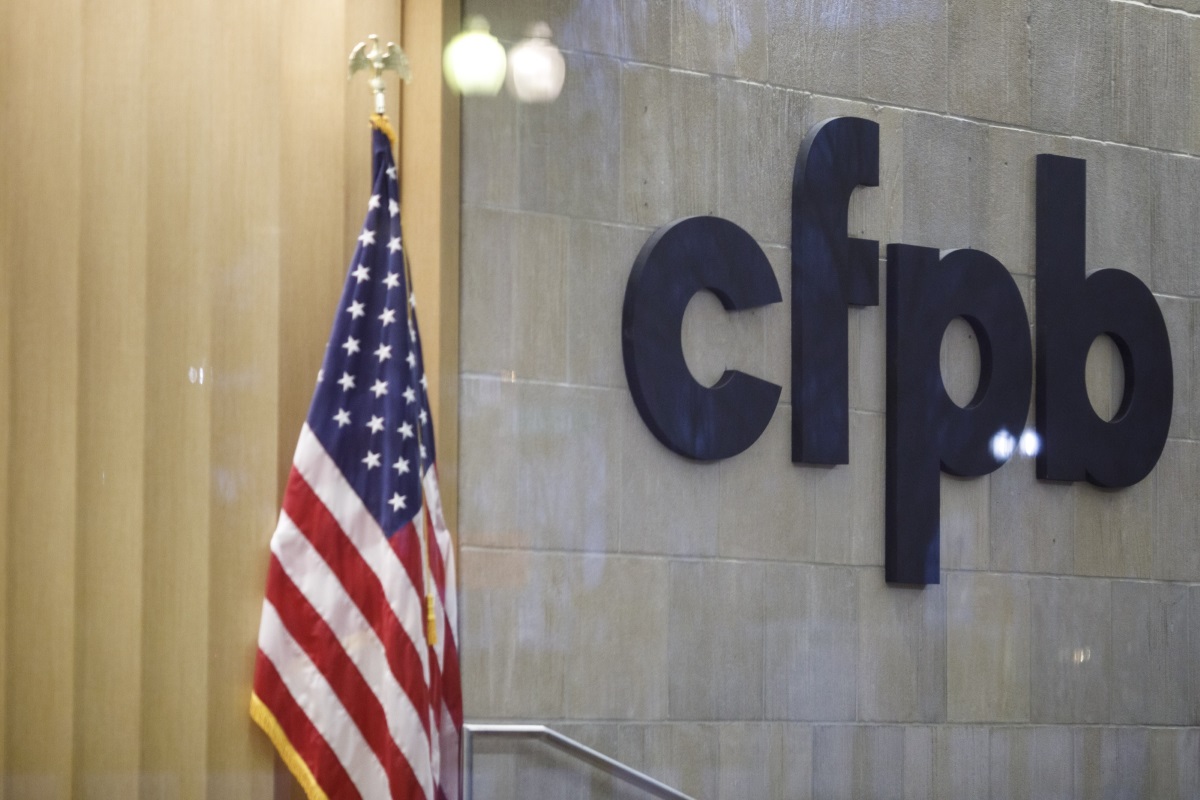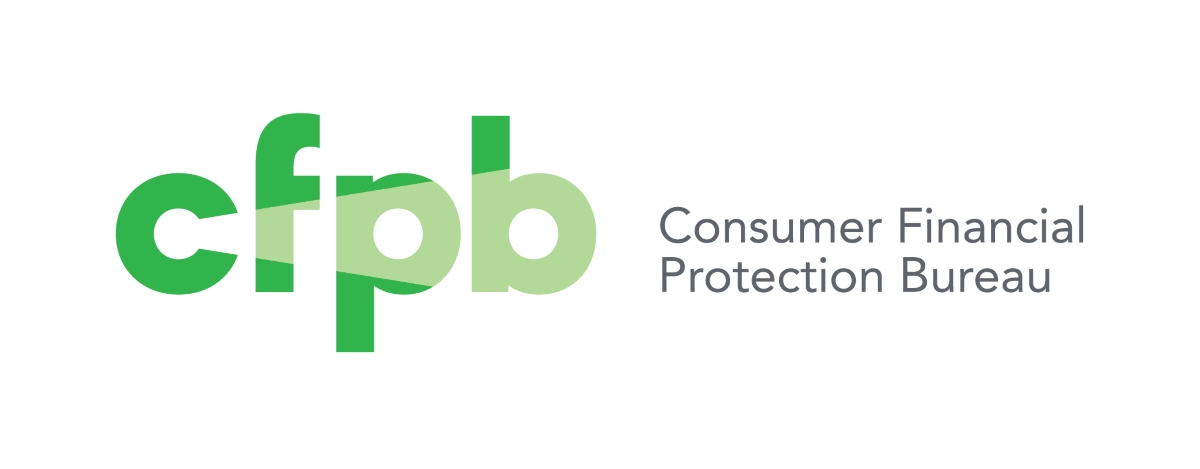Home>Finance>When Did The Consumer Financial Protection Bureau Come Into Existence?


Finance
When Did The Consumer Financial Protection Bureau Come Into Existence?
Modified: March 1, 2024
Discover the origin of the Consumer Financial Protection Bureau and its impact on the world of finance. Uncover its establishment date and significance in the financial industry.
(Many of the links in this article redirect to a specific reviewed product. Your purchase of these products through affiliate links helps to generate commission for LiveWell, at no extra cost. Learn more)
Table of Contents
Introduction
The Consumer Financial Protection Bureau (CFPB) is a regulatory agency established to protect consumers in the financial marketplace. Its purpose is to ensure fairness, transparency, and accountability in various financial industries, including banking, lending, and credit reporting. The creation of the CFPB was a response to the global financial crisis of 2008, which exposed numerous predatory and unfair practices by financial institutions.
Since its inception, the CFPB has played a crucial role in safeguarding consumers’ rights and promoting responsible financial practices. By implementing regulations and taking enforcement actions, the bureau aims to prevent deceptive practices, promote transparency, and provide consumers with the necessary tools and information to make informed financial decisions.
In this article, we will explore the history, powers, achievements, and controversies surrounding the Consumer Financial Protection Bureau. We will delve into the events that led to its creation, the impact it has had on the financial industry, and the challenges it has faced along the way.
Through this examination, we will gain a better understanding of the role that the CFPB plays in protecting consumers’ interests, shaping financial policies, and maintaining a fair and equitable financial marketplace.
Background of Consumer Financial Protection Bureau (CFPB)
The Consumer Financial Protection Bureau (CFPB) was created as a result of the Dodd-Frank Wall Street Reform and Consumer Protection Act, which was signed into law in 2010. The financial crisis of 2008 exposed numerous abusive and unfair practices by financial institutions, leaving consumers vulnerable to deceptive lending, discriminatory practices, and predatory behavior.
Before the establishment of the CFPB, consumer protection in the financial industry was divided among several agencies, each with limited oversight and authority. This fragmented system made it challenging to hold financial institutions accountable and protect consumers effectively. Recognizing the need for a comprehensive and focused agency, Congress passed the Dodd-Frank Act, which included provisions to create the CFPB.
The CFPB is an independent agency within the Federal Reserve System and was designed to consolidate and streamline consumer financial protection. Its mission is to ensure that consumers have access to fair and transparent financial products and services and to promote a level playing field for both consumers and financial institutions.
One of the key motivations behind the creation of the CFPB was to establish a single entity with the authority to enforce consumer financial protection laws and regulations. Prior to its establishment, the responsibility for enforcing these laws lay with various agencies, such as the Office of the Comptroller of the Currency, the Federal Reserve, and the Federal Trade Commission.
The CFPB was also tasked with consumer education and empowerment. It aimed to provide consumers with the information and tools they need to make informed financial decisions and to protect them from deceptive and abusive practices in the financial marketplace. The bureau operates a consumer complaint database, where individuals can submit complaints about financial products and services, helping to identify emerging issues and trends.
In essence, the CFPB was created to be a strong and unified advocate for consumers, addressing their concerns, protecting their rights, and ensuring a fair and transparent financial system. With a broad mandate and extensive oversight capabilities, the bureau was poised to make a significant impact on the financial industry and the lives of everyday consumers.
Creation and Establishment of CFPB
The creation and establishment of the Consumer Financial Protection Bureau (CFPB) was a significant milestone in the realm of consumer financial protection. The seeds for its formation were sown in the aftermath of the 2008 financial crisis, which highlighted the need for stronger oversight and regulation in the financial industry.
The CFPB was officially established on July 21, 2011, with the enactment of the Dodd-Frank Wall Street Reform and Consumer Protection Act. This landmark legislation aimed to address the shortcomings and gaps in the existing regulatory framework and ensure that consumers were protected from fraudulent and abusive practices.
Under the leadership of Elizabeth Warren, who was appointed as the Special Advisor to the Secretary of the Treasury for the CFPB, the bureau began to take shape. Warren, an advocate for consumer rights and a strong proponent of financial regulation, played a pivotal role in laying the foundation for the new agency.
The CFPB was designed to have autonomous decision-making power and to be independent of political influence. Its structure and funding were carefully crafted to ensure its effectiveness and credibility. The bureau operates with a single director who is appointed by the President and confirmed by the Senate, serving a five-year term.
Notably, the CFPB is funded by the Federal Reserve System rather than through the traditional congressional appropriations process. This funding structure provides the bureau with a degree of autonomy and insulation from political pressures that other regulatory agencies may face.
During its early years, the CFPB focused on building its infrastructure, hiring staff with expertise in consumer protection, and developing regulations and enforcement policies. It also embarked on an ambitious mission of educating consumers about their financial rights and responsibilities.
Despite its relative youth, the CFPB quickly made its presence known in the financial industry. It flexed its enforcement muscles by taking action against predatory and abusive practices and imposing hefty fines on financial institutions found to be in violation of consumer protection laws.
Throughout its formative years, the CFPB faced challenges and opposition from various stakeholders, including financial industry lobbyists and politicians critical of its regulatory powers. However, it continued to forge ahead, determined to fulfill its mission of protecting consumers and promoting fair practices in the financial marketplace.
In the next section, we will explore the powers and responsibilities entrusted to the Consumer Financial Protection Bureau and how it has made a tangible impact on consumer protection and financial regulation.
The Dodd-Frank Wall Street Reform and Consumer Protection Act
The Dodd-Frank Wall Street Reform and Consumer Protection Act, commonly referred to as Dodd-Frank, is a landmark piece of legislation that brought about significant changes in the financial industry. Enacted in response to the 2008 financial crisis, Dodd-Frank aimed to address the root causes of the crisis and prevent similar events in the future.
One of the central components of Dodd-Frank was the creation of the Consumer Financial Protection Bureau (CFPB). The CFPB was given the authority to regulate and supervise various financial institutions and enforce consumer protection laws. It was tasked with ensuring that consumers had access to transparent and fair financial products and services.
Dodd-Frank also introduced significant reforms in the banking sector. It established tougher capital and liquidity requirements for banks, aimed at enhancing their stability and resilience. The law also created the Financial Stability Oversight Council, tasked with monitoring and addressing systemic risks in the financial system.
Furthermore, Dodd-Frank imposed stricter regulations on the mortgage industry. It prohibited predatory lending practices and introduced reforms to protect homeowners from abusive mortgage practices. The act also created the Office of Mortgage Settlement Oversight to oversee the enforcement of mortgage servicing standards.
In an effort to enhance transparency and accountability in the derivatives market, Dodd-Frank mandated the clearing of standardized derivatives through regulated central clearinghouses. It also imposed reporting requirements on derivative transactions, aiming to improve market oversight and reduce risk.
Additionally, Dodd-Frank introduced executive compensation reforms, aiming to align the incentives of executives with long-term growth and stability rather than short-term profits. The act required publicly traded companies to provide shareholders with a non-binding vote on executive compensation packages.
Overall, the Dodd-Frank Act was a comprehensive piece of legislation that sought to address systemic risks in the financial industry, protect consumers from abusive practices, enhance transparency, and promote financial stability. While it received praise for its efforts to prevent future financial crises and protect consumers, it also faced criticism for its complexity and perceived regulatory burden on financial institutions.
Despite attempts to roll back certain provisions of Dodd-Frank in subsequent years, the core elements of the legislation, including the establishment of the CFPB, remain in effect. The act continues to shape the regulatory landscape of the financial industry and play a vital role in safeguarding consumers and promoting a more stable and transparent financial system.
Powers and Responsibilities of CFPB
The Consumer Financial Protection Bureau (CFPB) was granted a broad range of powers and responsibilities to ensure the protection of consumers in the financial marketplace. These powers were established to address the gaps in oversight and regulation that existed prior to the creation of the bureau.
One of the primary responsibilities of the CFPB is to enforce and implement federal consumer financial laws. The bureau has the authority to investigate and take enforcement actions against financial institutions that engage in unfair, deceptive, or abusive practices. It can impose fines, initiate lawsuits, and seek restitution for harmed consumers.
Additionally, the CFPB has the power to issue regulations and guidelines to promote fair practices in the financial industry. This includes developing rules to address issues such as mortgage lending, credit reporting, debt collection, and payday lending. These regulations help establish a level playing field for consumers and financial institutions, ensuring that consumers are treated fairly and transparently.
The bureau is also responsible for educating and empowering consumers. It provides resources, guides, and tools to help individuals make informed financial decisions. The CFPB operates a consumer complaint database, allowing consumers to submit complaints about financial products and services, which helps to identify trends and emerging issues.
Furthermore, the CFPB plays a role in promoting financial literacy and education. It conducts research on consumer financial behaviors and preferences, shares educational materials, and partners with organizations to develop programs to improve financial capabilities among individuals and communities.
Another key responsibility of the CFPB is to monitor and supervise financial institutions to ensure compliance with consumer financial laws. It has the authority to examine and assess the practices of banks, credit unions, mortgage servicers, debt collectors, and other financial entities. This oversight helps to detect and prevent unfair practices, ensuring that consumers’ rights are protected.
The CFPB also works in collaboration with other federal and state agencies to coordinate and harmonize consumer protection efforts. It shares information and collaborates with agencies such as the Federal Trade Commission and the Department of Justice to address systemic issues and strengthen consumer safeguards.
Overall, the CFPB’s powers and responsibilities are extensive and designed to uphold consumer rights, promote fairness in the financial marketplace, and hold financial institutions accountable for their actions. Through its enforcement actions, regulations, and consumer empowerment initiatives, the bureau strives to create a more transparent and equitable financial system.
Impact and Achievements of CFPB
Since its establishment, the Consumer Financial Protection Bureau (CFPB) has made a significant impact on consumer protection and financial regulation. Through its enforcement actions, regulations, and consumer empowerment initiatives, the bureau has achieved notable achievements in its mission to ensure fairness, transparency, and accountability in the financial marketplace.
One of the key accomplishments of the CFPB is its enforcement actions against financial institutions engaged in unfair, deceptive, or abusive practices. The bureau has imposed substantial fines and obtained billions of dollars in restitution for harmed consumers. This has served as a deterrent to predatory practices, holding financial institutions accountable and providing restitution to those who have been harmed.
The CFPB has also played a crucial role in addressing issues in the mortgage industry. It has implemented regulations to prevent predatory lending practices, require transparency in mortgage disclosures, and provide protections for homeowners facing foreclosure. These efforts have helped to safeguard consumers and contribute to the stabilization of the housing market.
Additionally, the CFPB has taken steps to address discriminatory lending practices and promote fair access to credit. It has undertaken investigations and enforcement actions against lenders and financial institutions found to be engaging in discriminatory practices. This has contributed to greater awareness and compliance with fair lending laws, reducing disparities in access to credit.
The bureau’s consumer complaint database has been a valuable tool in identifying and addressing consumer issues. It provides a platform for consumers to share their experiences and seek resolution. The CFPB uses this data to identify patterns of abuse, monitor industry trends, and prioritize areas for regulatory action. It has resulted in changes in industry practices and the resolution of thousands of consumer complaints.
Furthermore, the CFPB has played a crucial role in promoting financial literacy and education. Through its educational initiatives and partnerships, the bureau has provided resources and information to help consumers make informed financial decisions. Its efforts have empowered individuals to manage their finances more effectively and protect themselves from abusive practices.
Overall, the CFPB’s impact and achievements are evident in its efforts to protect consumers, hold financial institutions accountable, and promote transparency in the financial marketplace. Through its enforcement actions, regulations, and consumer empowerment initiatives, the bureau has made significant strides in ensuring fair and equitable treatment for consumers across various financial industries.
Criticisms and Controversies Surrounding CFPB
The Consumer Financial Protection Bureau (CFPB) has not been without its fair share of criticisms and controversies since its inception. While the bureau has been applauded for its efforts in protecting consumers, some of its actions and regulatory practices have been met with opposition from various stakeholders.
One of the main criticisms leveled against the CFPB is its perceived lack of accountability and transparency. Because the bureau is not subject to the traditional appropriations process, it has been accused of operating with little oversight and facing limited accountability to Congress. Critics argue that this lack of transparency makes it difficult to evaluate the effectiveness and efficiency of the bureau’s actions.
Furthermore, the CFPB has faced criticism regarding the impact of its regulations on small financial institutions. Critics argue that the regulatory burden imposed by the bureau disproportionately affects smaller banks, credit unions, and community lenders. Compliance costs and regulatory complexity can impose significant challenges on small institutions, potentially stifling competition and limiting access to credit for consumers.
Opponents of the CFPB also argue that the bureau’s enforcement actions have been overly aggressive and lacking in due process. Some financial institutions have criticized the bureau for imposing heavy fines without sufficient evidence of wrongdoing or for using broad interpretations of consumer protection laws. Critics claim that these actions can have unintended consequences, such as increased costs for consumers or restricted access to financial services.
Another controversy surrounding the CFPB revolves around the structure of the bureau itself. The fact that it is led by a single director appointed by the President and confirmed by the Senate has been criticized for concentrating too much power in one individual. Critics argue that this lack of a multi-member commission or board can lead to potential abuse of power and limited accountability.
In addition, the CFPB has faced legal challenges to its constitutionality. Notably, the U.S. Supreme Court ruled in 2020 that the structure of the bureau violated the Constitution’s separation-of-powers principles, but upheld the CFPB’s existence, severing the provision that made the director removable only for cause by the President.
While the CFPB has made efforts to address some of these criticisms, such as improving its outreach to small financial institutions and enhancing accountability measures, the controversies surrounding the bureau continue to generate debate and discussion.
It is important to note that these criticisms are not universal, and the CFPB has also garnered support for its efforts to protect consumers, hold financial institutions accountable, and promote a fair and transparent financial marketplace. Nevertheless, ongoing controversies surrounding the bureau highlight the challenges and complexities inherent in consumer financial protection regulation.
Future of CFPB
The future of the Consumer Financial Protection Bureau (CFPB) will be shaped by various factors, including changes in leadership, political dynamics, emerging industry trends, and evolving consumer needs. As the financial landscape and consumer protection priorities continue to evolve, the CFPB will likely adapt its strategies and focus areas to remain relevant and effective.
One key aspect of the CFPB’s future is its leadership. With each change in administration, the CFPB can experience shifts in priorities, regulatory approaches, and enforcement strategies. This may lead to changes in the bureau’s focus areas and the types of financial issues it prioritizes for consumer protection.
The CFPB’s future will also be influenced by broader political dynamics and legislative developments. Changes in Congress or shifts in public sentiment towards financial regulation can impact the bureau’s authority, funding, and statutory powers. It remains to be seen how potential reforms or changes in the regulatory environment will affect the CFPB’s scope and effectiveness.
Furthermore, emerging industry trends and advancements in technology will shape the future of the CFPB’s work. With the rise of digital financial services, fintech, and alternative lending platforms, the bureau will need to stay vigilant to ensure that consumer protection laws and regulations keep pace with these evolving trends. This may involve adapting existing regulations, developing new guidelines, or collaborating with industry stakeholders to foster innovation while still ensuring consumer safety and fairness.
The CFPB will also need to address emerging challenges and protect consumers in areas such as data privacy and cybersecurity. As more financial transactions and personal information are exchanged online, the bureau will play a vital role in setting standards and enforcing regulations to safeguard consumers’ digital financial well-being.
Additionally, the CFPB’s future will be influenced by its ongoing efforts to increase financial literacy and promote consumer education. As financial products and services become more complex, the need for educating consumers about their rights, responsibilities, and available resources will continue to grow. The bureau’s initiatives in this area will empower consumers to make informed financial decisions and protect themselves from fraudulent practices.
Ultimately, the future of the CFPB depends on its ability to adapt, innovate, and effectively address emerging challenges in the financial industry. With a focus on balancing consumer protection and industry innovation, the bureau will play a vital role in maintaining a fair and transparent financial marketplace that benefits both consumers and financial institutions.
Conclusion
The Consumer Financial Protection Bureau (CFPB) has established itself as a significant player in the realm of consumer financial protection since its creation. With a mandate to ensure fairness, transparency, and accountability in the financial marketplace, the CFPB has made notable strides in protecting consumers, holding financial institutions accountable, and promoting responsible financial practices.
Through its enforcement actions, the CFPB has imposed fines, secured restitution for harmed consumers, and deterred predatory practices in the financial industry. Its regulations have introduced important safeguards against unfair practices in areas such as mortgages, credit cards, and payday lending.
The bureau’s focus on consumer education and empowerment has provided individuals with the necessary tools and resources to make informed financial decisions. The CFPB’s consumer complaint database has served as a valuable platform for consumers to voice their concerns and seek resolution.
Despite its achievements, the CFPB has faced criticisms and controversies. Concerns about its accountability, impact on small financial institutions, and regulatory practices have generated debates, requiring ongoing efforts to address these issues.
The future of the CFPB will depend on various factors, including changes in leadership, political dynamics, technological advancements, and emerging industry trends. As the financial landscape continues to evolve, the bureau will need to adapt its strategies and priorities to effectively address new challenges.
Ultimately, the importance of the CFPB lies in its ability to promote a fair and transparent financial marketplace that benefits both consumers and financial institutions. By continuing to prioritize consumer protection, regulatory innovation, and financial education, the CFPB can uphold its mission of ensuring that consumers are treated fairly and provided with the necessary tools to navigate the complex financial landscape.
As the CFPB moves forward, it must strike a delicate balance between protecting consumers from abusive practices and fostering innovation and access to credit. By doing so, the bureau can help shape a financial system that works in the best interest of all stakeholders, contributing to a stronger and more equitable economy for years to come.














